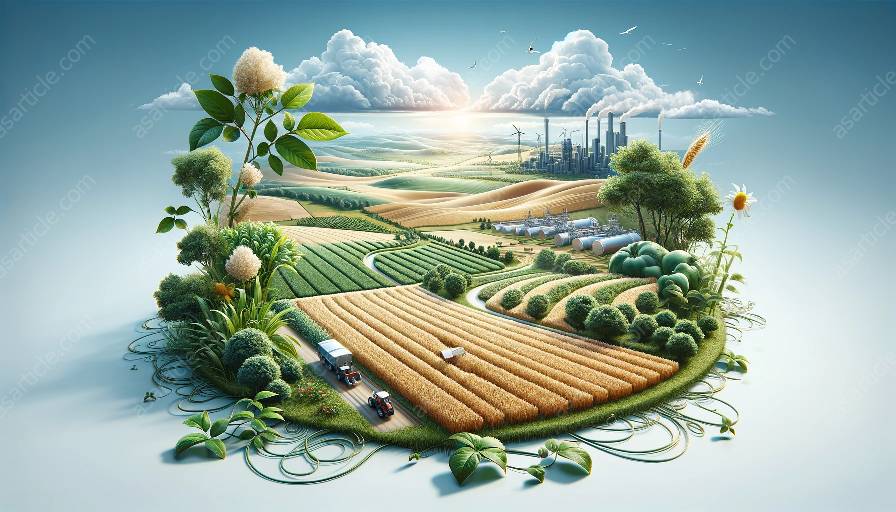Understanding the critical role of crop rotation and cover crops is essential in soil conservation and land management. These practices not only promote sustainable agricultural sciences but also contribute to improved soil health and productivity.
The Importance of Crop Rotation
Crop rotation is a time-tested agricultural practice that involves growing different crops in the same area over a sequence of seasons or years. It is an effective strategy to break the cycle of pests and diseases, improve soil fertility, and enhance crop yields.
Benefits of Crop Rotation:
- Disease and Pest Control: Rotating different crops disrupts the life cycles of pests and pathogens, reducing the need for chemical pesticides.
- Soil Health: Different crops have different nutrient requirements, thereby replenishing and maintaining soil fertility.
- Weed Control: Rotating crops with varying growth habits and root structures helps suppress weed growth.
- Balanced Nutrient Uptake: Different crops absorb and recycle nutrients in different ways, preventing depletion of specific nutrients in the soil.
Implementing Crop Rotation
There are various crop rotation systems, including simple and complex rotations, that farmers can adopt based on their specific agricultural needs. Some common crop rotation patterns include the traditional three-field system, four-field system, and more modern variations that incorporate cover crops and cash crops.
For example, a basic crop rotation plan might involve planting nitrogen-fixing legumes, such as soybeans or peas, to replenish soil nitrogen levels after a nitrogen-depleting crop like corn. This can be followed by a crop that utilizes the available nitrogen, such as wheat or barley, and then a cover crop to protect the soil during fallow periods.
Harnessing the Power of Cover Crops
Cover crops are non-cash crops grown primarily to benefit the soil and the environment. They are an integral part of sustainable agriculture, playing a significant role in soil conservation and land management.
Advantages of Cover Crops:
- Soil Erosion Control: Cover crops protect the soil from erosion caused by wind, water, and other environmental factors, preserving the land's productivity.
- Enhanced Soil Structure: The root systems of cover crops improve soil aggregation and porosity, promoting better water infiltration and retention.
- Nutrient Management: Cover crops scavenge excess nutrients, reduce leaching, and contribute organic matter to the soil through decomposition.
- Biodiversity and Habitat Enhancement: Cover crops provide habitat and food sources for beneficial insects and microorganisms, fostering a balanced ecosystem.
Incorporating Cover Crops into Agricultural Practices
Integrating cover crops into crop rotation and land management plans is a proactive approach to building resilient and sustainable agricultural systems. Farmers can select cover crops based on their specific goals, such as reducing soil compaction, suppressing weeds, or enhancing soil fertility.
Some popular cover crop options include winter rye, clover, vetch, buckwheat, and radishes. Understanding the life cycles, growth characteristics, and soil requirements of these cover crops is crucial for successful integration into farming practices.
Impacts on Soil Conservation and Land Management
Both crop rotation and cover crops contribute significantly to soil conservation and sustainable land management. These practices mitigate soil erosion, enhance soil fertility, and reduce the dependency on chemical inputs, promoting long-term environmental and economic benefits.
By reducing the need for synthetic fertilizers, pesticides, and herbicides, farmers practicing crop rotation and cover cropping contribute to a healthier environment while maintaining or improving crop yields.
Contribution to Agricultural Sciences
The adoption and promotion of crop rotation and cover crop practices align with the evolving principles of agricultural sciences. Sustainable and regenerative agricultural approaches are gaining significance, focusing on achieving ecological balance, enhancing biodiversity, and minimizing adverse environmental impacts.
Through research and innovation, agricultural scientists are continuously exploring the synergies between crop rotation, cover crops, and soil conservation to develop holistic and efficient farming systems.
Conclusion
Recognizing the interconnectedness of crop rotation, cover crops, soil conservation, and land management is crucial for the sustainable future of agriculture. These practices form the foundation for resilient farming systems that prioritize environmental stewardship, resource efficiency, and long-term productivity.

